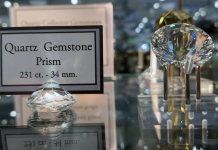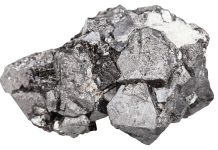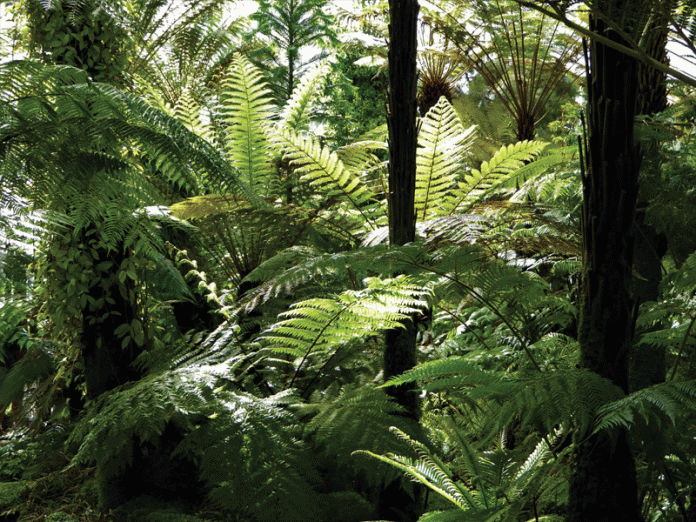
Love the Jurassic Park movies? Create your own Jurassic forest! In the first Jurassic Park, an ailing triceratops ate poisonous berries from a plant that would not have been around during the Jurassic. But what plants did dinosaurs eat?
Jurassic Plant: Gone, But Not Forgotten!
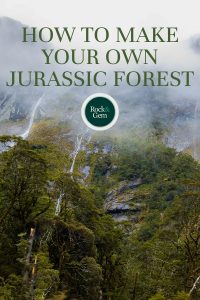
While today in the Cenozoic Era (“The Age of Mammals”) we look out on grasses, flowers, and deciduous trees, it wasn’t always so. During the Mesozoic Era (“The Age of Dinosaurs”), cycads, ginkgos and conifers dominated the landscape. Some still exist as “living fossils” or organisms nearly unchanged over long expanses of time. While some were once abundant, they are now reduced to a single species.
Others, once thought to be extinct, were rediscovered in remote corners of the world in tiny populations called relicts.
Cycads: Fernlike Fronds on Pineapple Trunks
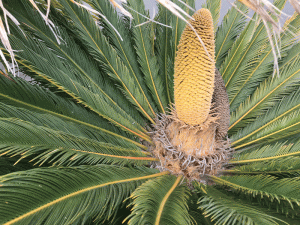
When non-avian dinosaurs went extinct 66 million years ago, cycads did not. Several species still exist, including one that is popular for indoor/outdoor decoration: the sago palm. But this is no palm! Although palm-like fronds sprout from pineapple-like trunks, that’s as palmy as it gets. Palms belong to a group of flowering plants called angiosperms. Cycads belong to a more ancient group called gymnosperms.
Cycads appeared before the dinosaurs but became most abundant alongside them. Per paleobotanists, they may have made up 20% of all plants during the Triassic and Jurassic Periods. Some even call the Jurassic Period “The Age of Cycads.”
Ginkgos: Fruiting Trees You Can Eat!
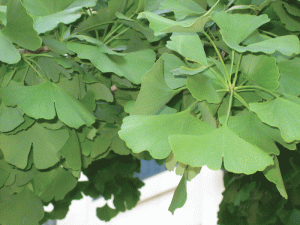
Ginkgo trees have distinctive fan-shaped leaves. Plants related to today’s ginkgos date from the Permian Period before the Age of Dinosaurs. They took off during the mid-Jurassic and early Cretaceous periods appearing alongside dinos. As the Mesozoic gave way to the Cenozoic, the ginkgo family declined until only a couple of species remained. They disappeared almost entirely from the fossil record by the end of the Pliocene Epoch, 2.5 million years ago.
While ginkgos once ranged worldwide, there is now a single species, Ginkgo biloba, in a small area of China. They’ve been transplanted to cities around the world as ornamental trees. Extracts from leaves are used in medicines and the seeds are edible. On a side note, I tried some in a Hong Kong restaurant. While dinosaurs may have liked them, I don’t recommend them. Still, yucky as they are, how often do you get to eat something a dinosaur ate?!
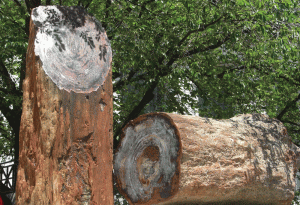
Araucaria: Towering Pines
Today, Norfolk pines and monkey puzzle trees are among the 20 species of coniferous trees in the genus Araucaria. These are related to trees that began during the Age of Dinosaurs. One well-known example is the Arizona state fossil Araucarioxylon arizonicum found in the Petrified Forest National Park where colorful logs from the Triassic Period litter the ground.
Dawn Redwood
In California, redwoods on the coast and in the Sierra Nevada draw tourists. These are sequoias, which evolved from an evergreen called Metasequoia. Metasequoia was thought to be extinct until a grove was discovered in China. From there, it’s been reintroduced into America, just like the ginkgo.
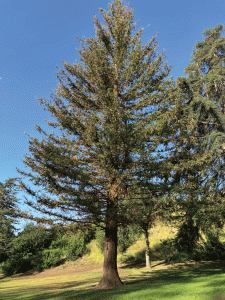
During the Age of Dinosaurs and well into the Age of Mammals, Metasequoia and its kin ranged across the Northern Hemisphere. While not exactly part of the Jurassic Forest, Metasequoia fossils were common in forests from the Late Cretaceous Periods into the Miocene Epoch.
Create Your Own Jurassic Forest!
Living fossils trace ancestry back millions of years. Collect fossil specimens of ginkgos, cycads, araucaria and redwoods. Or plant these species to decorate your yard to create your very own Jurassic forest and enjoy the same shade enjoyed by the dinosaurs!
This story about making your own Jurassic forest appeared in Rock & Gem magazine. Click here to subscribe. Story by Jim Brace-Thompson.



